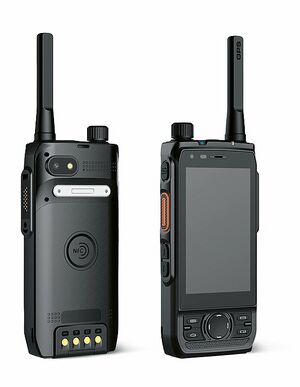
The Vertex Combat Scanner os more commonly just Combat Scanner is a scaled down more durable version of the Vertex Scanner. While it has less capabilities, it is smaller and lighter.
- Size
- 130 x 68 x 13.7 mm / 34 mm Antenna
- Power Source
- Spacial Variance Reactor
Electro-Plasma Battery - Processor
- Encapsulated Computer Core
- Connectivity
- Subspace and RF Transceivers
Capabilities
This device is designed to combat deployment and is capable of withstanding high speed impacts of up to 5.5 kN for up to 3 seconds. While not as capable as its larger cousin, it focuses on communication and scanning. Resolution suffers somewhat, as does sheer processing power. The device has a single ECC to provide computing power as well as a single SVR providing electrical power. The device does have a simple holographic imager, which is capable of producing a low-power holographic interface no more than 16 cm from the screen. It does not have any high resolution holographic imaging system.
Scanning
- VAM Enhanced Sensor Pallet
- Active & Passive High Resolution Subspace Scanner
- Active & Passive High Resolution EM Scanner
- Active & Passive Temporal Scanner
- Active IR, Visible Light, UV Image Analyzer
- Passive Audio Scanner
- Active & Passive Biomedical Scanner
Data Processing
The system is designed to handle and coordinate multiple dynamic data streams simultaneously from remote sensing, library computer access, and internal sensing systems.
- High Bandwidth Isolinear & Optical Data Processing Suite
- ECC CPU
- Remote Command and Control Interface
- Remote Control of Surveillance Drone Swarm (up to 32-Drone Swarm)
- Control & Coordination of Mark 1 Active Repair System
AI Usage
The device is capable of handling a Type 3 Multinodal Core, though it is not a standard component there is a dedicated slot for such a device within the unit.
Communications
The system is capable of handling multiple high bandwidth subspace, RF, and tachyon data links with multiple external computer systems simultaneously. The device can be in a passive mode, accessing remote data and displaying requested information or in an active mode where it manages and relays information between remote systems and itself. Normally the unit maintains an active data link with BlueNet to allow near-instantaneous relaying of information.